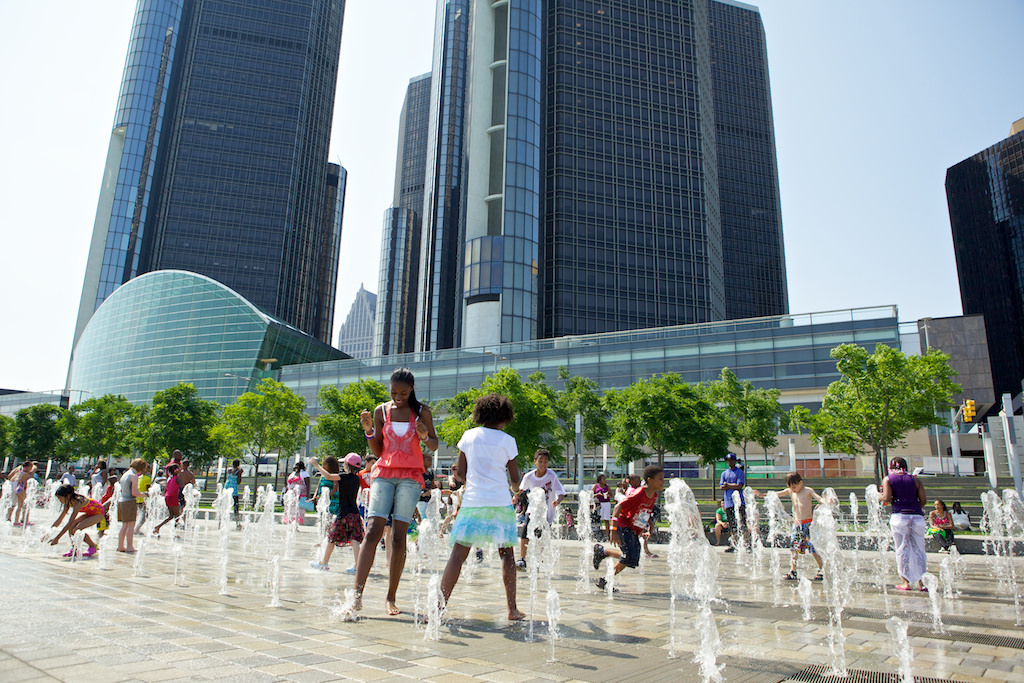
A lean means of reinventing our communities
Andrés Duany is a founding principal of Duany Plater-Zyberk & Co. and president of the Center for Applied Transect Studies, which recently received a Knight Foundation grant for more than $600,000 to support its Project for Lean Urbanism. (Duany adapted this post from an article he wrote for Fortune.) Above: Andrés Duany. Photo credit: Flickr user Michigan Municipal League.
As an architect and urban planner, I have been immersed in designing communities for nearly 40 years. The designs have been based on the principles of New Urbanism. That well-established strategy focuses on designing walkable neighborhoods that feature lively public spaces and buildings with mixed uses, while supporting policies on a national level to make those vibrant urban communities part of everyday life.

Related Link
On the other end of the spectrum is Tactical Urbanism, a nascent movement that seeks to create change through impromptu interventions in public space, such as pop-up parks. These efforts often focus on the short term.
Between the two is another model, Lean Urbanism, which focuses on revitalizing cities by finding ways for people to participate in community-building—specifically, by enabling everyday people to get things done. Knight Foundation’s support for the Project for Lean Urbanism will help us create tools and techniques over the next three years to make it easier for people to engage in shaping their own communities.
Detroit, one of the communities where Knight Foundation invests, serves well as an example. Due to the city’s fiscal hardship, layers of red tape are being peeled away. There are in fact two Detroits. Sure, there are abandoned properties, but there are also people making something from them.
How is this revitalization happening? The old way, it seems, in that sequence that has always powered the cycle of cities: the unsanctioned activity of artists with a good eye, the penniless young people with a sense of adventure, and the small entrepreneurs who used to be called the bohemians. These were the pioneers of Greenwich Village in the 1920s, Miami Beach in the ’80s, and Brooklyn now. They are the first wave in a succession of actors who thrive below the horizon of bureaucratic control. They can be classified as risk-oblivious. Later, when the neighborhood is cool, come the risk-aware. These are the developers and business owners who secure proper permits and mortgages. Later yet, when it is obvious that the place is safe for investment, arrive the risk-averse—the gentrifiers called “the dentists from New Jersey.”
Detroit is now a place where risk-oblivious millennials can get things done. This is too difficult in most places because of regulations, bureaucracy that makes it impossible to bake a cookie for sale without a certified kitchen, an accessible bathroom and constant inspections. Bureaucracies have exterminated the slack that once allowed bohemians to inhabit a place organically. We elders haven’t noticed because most of us grew up amid the rising tide of regulation. Young people, however, are bewildered and repelled.
In Detroit, city staff can no longer supervise the streetlights, let alone gainful economic activity. There is less red tape. So the young are immigrating in droves to start their businesses, to fix the buildings, to live affordably, to make their own security arrangements, to invent their amusements. The Project for Lean Urbanism is looking for ways to enable this activity in other places.
In most cities, because regulation has exterminated the first, organic phase of revitalization, the second wave, the developers, must be enticed—and so governments subsidize their expensive, red tape-compliant projects. That is why public-private partnerships have proliferated over the past 20 years, and big players have gained privilege over the small. This need not be.
Detroit has inadvertently restored the organic sequence. Developers are following the young people. Big developers such as Dan Gilbert are renovating big buildings and recruiting potential tenants by showing them that the workers they require are already there. The Project for Lean Urbanism intends to restore this normal process.
Because it has fewer impediments, Detroit—a city without wealth—allows its in-migrants to grow wealth. When the building inspector says “Go ahead, kids; just don’t hurt yourselves,” it is similar to the situation encountered by my boomer generation when we were very young in places such as South Beach and Seaside, Fla., which we designed in 1980, the first new town based on the principles of New Urbanism. We were allowed to get things done. If such bureaucratic impediments had existed then, we too would have buckled under, because we too were naive.
Detroit is a fragment of the virgin continent of the 19th century and a model for the work we’re doing. It represents a goldmine for the young, the immigrant, the maker, the small business owner—people who have the energy to work for themselves and who become rebellious when confronted with an institutionalized lack of common sense.
We will use convenings and case studies, such as what is happening in Detroit, to draft tools and then test them in pilot projects. Knight’s support will enable us to freely share the knowledge we gain from these experiments.
Carol Coletta and Andrés Duany will host a live webinar, “Lean Urbanism: Building Successful Cities,” on Tuesday, March 4, from noon to 1 p.m. ET. Register here and follow #LeanUrbanism on Twitter for more information.
Recent Content
-
Community Impactarticle ·
-
Community Impactarticle ·
-
Community Impactarticle ·


